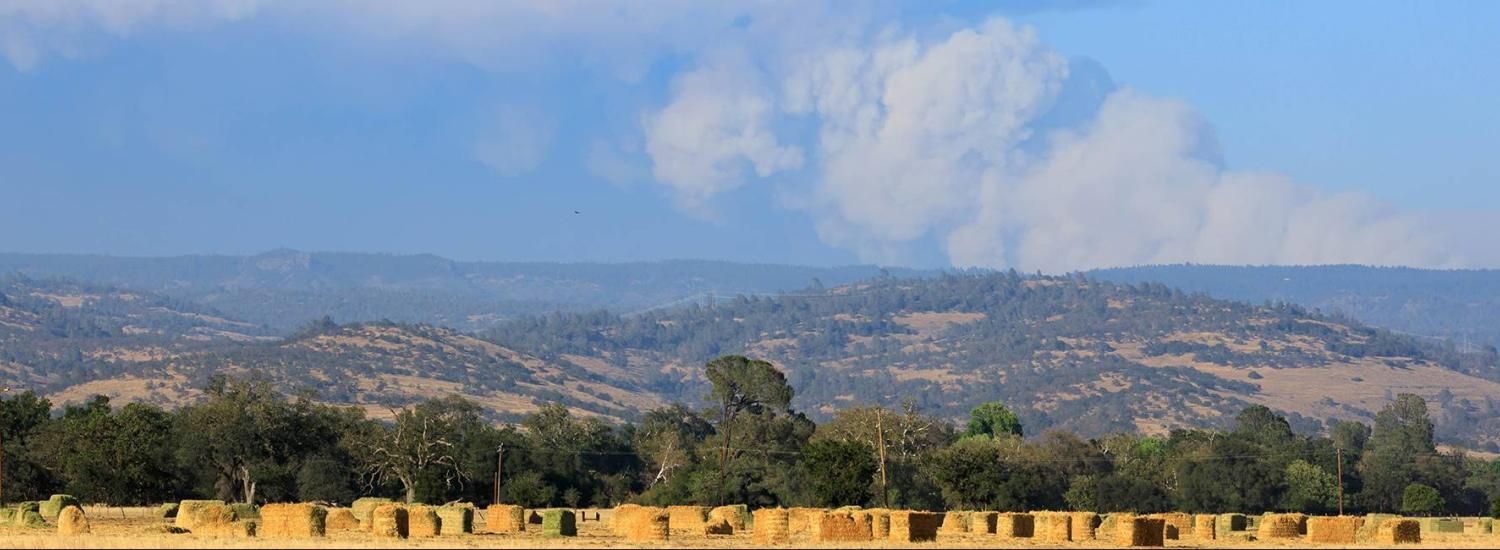2021 update: global air quality impacts from wildfires, heat increasing and expected to keep rising
WMO’s 2022 Air Quality And Climate Bulletin highlights connections between air quality and climate change in 2021

In 2021, hot, dry conditions in some parts of the world fueled the spread of wildfires and worsened air quality—and both wildfires and air pollution are expected to increase as the climate continues to warm, according to an annual report from the World Meteorological Organization (WMO). Two CIRES scientists working in NOAA laboratories led and contributed to the 2022 WMO Air Quality and Climate Bulletin No. 2, released today.
The Bulletin documents the connections between air quality and climate change, including how the growing frequency and intensity of wildfires led to increased particulate matter pollution in 2021. The report also outlines a range of possible air quality outcomes throughout the 21st century as the climate warms under high‑ and low‑emissions scenarios. The report’s launch coincides with today’s United Nations International Day of Clean Air for Blue Skies.
Owen Cooper, a CIRES scientist working in NOAA’s Chemical Sciences Laboratory, is lead editor of the second edition of the WMO report. Elisabeth Andrews, a CIRES scientist in NOAA’s Global Monitoring Laboratory, is a co-author, and GML Director Ariel Stein is an editor. NOAA also provided long-term observations of light absorption by black carbon and mineral dust at several remote stations around the world including the atmospheric baseline observatories in Barrow, Alaska, and Mauna Loa, Hawaii.
According to the new report, hot and dry conditions fueled the spread of wildfires across western North America in 2021, causing widespread increases in PM2.5 pollution that exceeded World Health Organization (WHO) air quality guidelines. In some parts of the U.S. West and southern Canada, the mean contribution of wildfire emissions to total ambient PM2.5 concentrations between May and September were 10 to 20 μg/m3, far exceeding the WHO annual recommended exposure limit of 5 μg/m3.
Intense wildfires in Russia also generated anomalously high PM2.5 concentrations—reaching 8 megatons (Mt) in 2021, 78 percent higher than the average level between 2004–2021 of 4.5 Mt. The report concluded that wildfires and associated air pollution are expected to increase as the climate continues to warm, even under a low‑emissions scenario.
A warming climate is also expected to increase the frequency, intensity and duration of heatwaves, leading to more episodes of poor air quality over highly polluted areas. That’s because stable atmospheric conditions can trap pollutants near the surface and hot, dry conditions and intense sunlight can exacerbate ozone production. At Earth’s surface, ozone is an air pollutant that harms health, crops and ecosystems.
Surface ozone levels are expected to increase across heavily polluted areas, particularly in Asia, if greenhouse gas emissions remain high and global temperatures rise by 3 °C from pre‑industrial levels by the second half of the 21st century—one of the scenarios outlined in the 2021 IPCC assessment. According to the Bulletin, future ozone could increase by 20 percent across Pakistan, northern India and Bangladesh, and by 10 percent across eastern China.
While emissions from fossil fuel combustion would account for most of the surface ozone increase in developing regions of the world, climate change could account for a fifth of that increase, exacerbating ozone pollution in some areas and impacting the health of hundreds of millions of people, the report concluded.
WMO issues this report annually, with updates on the state of air quality and its connections to climate change.
More information on the UN's International Day of Clean Air for Blue Skies is here: https://www.un.org/en/observances/clean-air-day